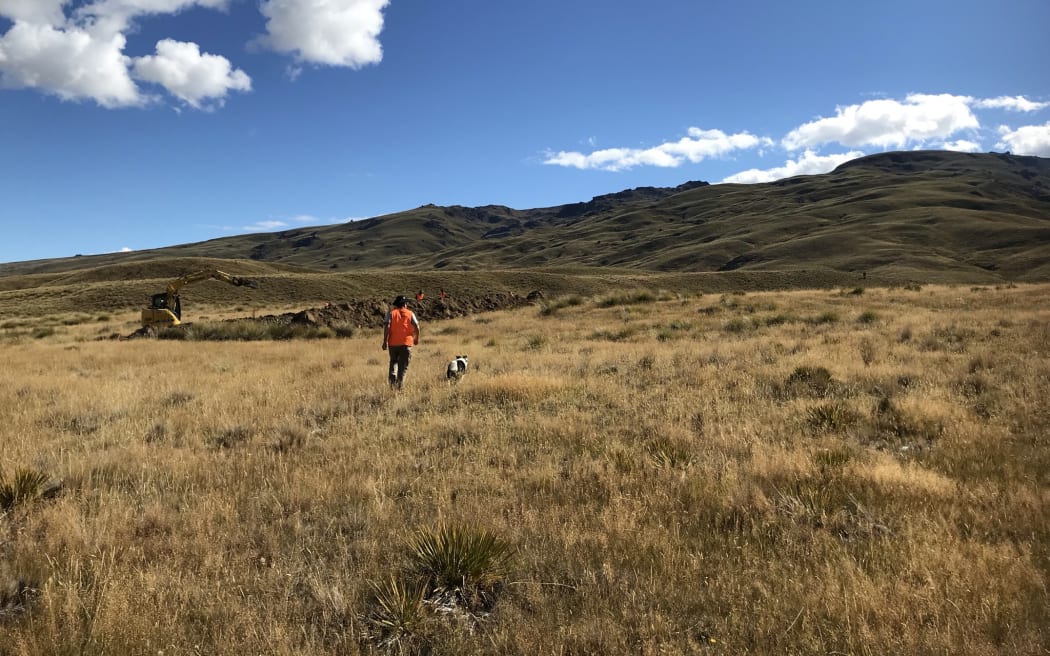Aotearoa New Zealand is in a collision zone. It is the place where the mighty Australian and Pacific tectonic plates meet. The main fault line runs the length of Te Wai Pounamu and off the east coast of Te Ika a Māui, but the pressure of these two plates meeting causes cracks and fissures across Aotearoa.

Prof Mark Stirling and Ashleigh Vause point out an interesting feature near the fault in the trench wall. Photo: RNZ
Follow Our Changing World on Apple Podcasts, Spotify, Stitcher, iHeartRADIO, Google Podcasts, RadioPublic or wherever you listen to your podcasts.
These interconnected fault lines rupture at different times, releasing some of the pressure of this massive collision. Some of them rupture relatively frequently. We know that part of the main fault line, the Alpine Fault, is one of these, producing large earthquakes about every 300 years. Others are low recurrence earthquake fault lines, with a larger time interval of more than ten thousand years between ruptures.
The Nevis Valley fault is one of these low recurrence ones. Found in the grassy high country of Otago it runs the length of the Nevis Valley, up to the Kawerau Gorge. Past studies have indicated that it ruptures every 10 to 12,000 years.
This was determined by a method called paleoseismic trenching – digging a deep trench perpendicular to the fault line and looking at the sedimentary layers for evidence of pre-historic earthquakes. This was first done on this fault in the 1980s, but recent advances in technology and dating techniques warrant a second look.
We join Professor Mark Stirling of the University of Otago and a team of geologists as they do some paleoseismic trenching to investigate the past pattern of earthquakes on this fault line.

Mark and Sage the dog heading towards the second trench site. Photo: RNZ


